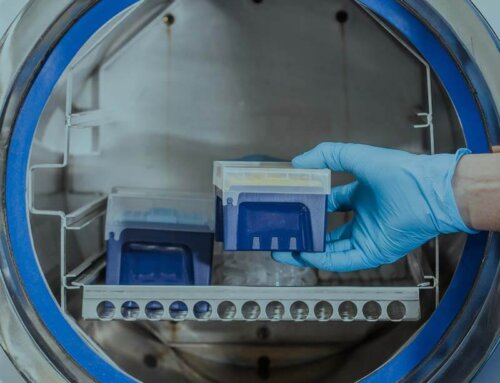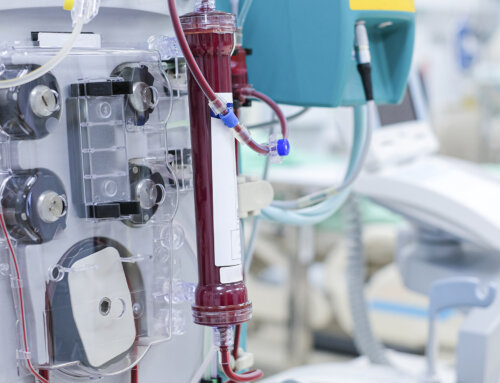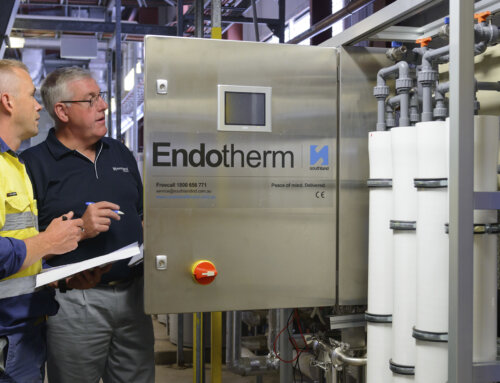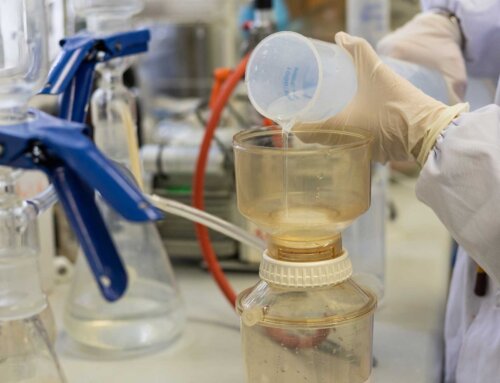Date: 16/04/2018
Updated: 30/01/2024
Read Time: 3 minutes
Author: Dr Surani McCaw, B.E. (Chemical), Ph. D.
Key Points:
- The two critical elements to achieve AS5369:2023 compliance is the point of sampling and the test methodology
- Samples should be taken where the water leaves the RO plant to feed the ringmain, and returns to the ringmain before entering the feed tank
- Samples should be taken routinely
- Action limits should be set as a risk mitigation strategy
AS5369:2023 compliance of your Reverse Osmosis (RO) plant relies on two crucial factors: the point of sampling and the test methodology. When both are executed accurately, they yield a precise evaluation of the microbial health of the purified water system. We’ve outlined the correct water plant test methodology in our article CSSD Water Test Methodology for AS5369:2023 Compliance.
Correct sampling in CSSD Water Plants
Routine water sampling is mandatory to ensure that your Reverse Osmosis (RO) plant continues to meet AS5369:2023 compliance. Monthly water sampling and analysis for TVC and at least 3 monthly for Endotoxin is recommended to identify bacterial persistence. Water samples must be taken from the correct locations around the CSSD purified water plant. Samples taken directly after the servicing of the RO plant where filters are new, and disinfection has been done, do not identify the microbial health of your RO plant. Samples must be taken at least 24 hours after a disinfection cycle. Samples need to be taken from a minimum of two points:
Point A – Where the water leaves the RO plant to feed the ringmain. This water sample indicates how the RO is performing.
Point B – Where the water returns to the RO plant, before it enters the treated water tank. This water sample indicates how the ringmain is performing.

What Samples Indicate
Compliance
- If your RO plant is compliant, both these points should indicate TVC < 100 cfu/100ml.
- If Point A meets compliance but not Point B, this can mean biofilm proliferation or deadleg in your ringmain.
- It is unusual to find Point B to be compliant and Point A to be non-compliant unless the RO plant (including the ringmain) was not designed correctly.
Biofilm proliferation and disinfection
- Typically, a gradual increase above a baseline, such as the action limit*, is a clear indication that biofilm bacteria proliferation is occurring within your system and that disinfection of the RO plant (the RO system and the ringmain) is immediately required to meet compliance.
- If water samples following this disinfection process do not clearly show a reduction in bacteria level, below the action limit, a more frequent disinfection cycle is required until bacteria level is under control. During this period, it is also recommended that the endotoxin level at Point A & Point B are also monitored.
- At most times, an increase in bacteria level and increased disinfection cycles can generate endotoxins and this can lead to the replacement of the RO unit and the ringmain.
Want to find out more about AS5369:2023 compliance? Email Dr Surani McCaw today.
Checklist
- Set an action limit*: Always set an action limit monitoring your purified water, the distribution loop and ringmain performance by sampling at the above points.
- Incorporate automatic disinfection: If your purified water system does not incorporate automatic disinfection, please consult your service provider as a matter of urgency.
- Activate disinfection after hours: If the system has automatic disinfection, this cycle should be programmed to activate after hours ASAP. We recommend disinfection at least once a day when the tank and the ringmain is operating at ambient temperature.
- Take samples monthly: We strongly recommend sampling should be undertaken monthly for total viable bacteria count.
*Action limits Setting action limits is a risk mitigation strategy. Its purpose is to flag that your system could become non compliant if immediate actions to rectify the issue have not been taken. You set the action limit below the compliant limit, to give you enough room to do something before it becomes non compliant. For example, in CSSD the AS5369:2023 requires less than or equal to 100 CFU per 100ml sample. So setting your action limit to 50, gives you a buffer to work with. Take charge of the health of your Reverse Osmosis (RO) plant by implementing routine water sampling practices. To ensure compliance with AS5369:2023, it’s imperative to collect water samples from specific points within the CSSD purified water plant.
Take the next step towards AS5369:2023 compliance. To discuss your specific requirements and explore customized strategies for success, contact Dr McCaw.




